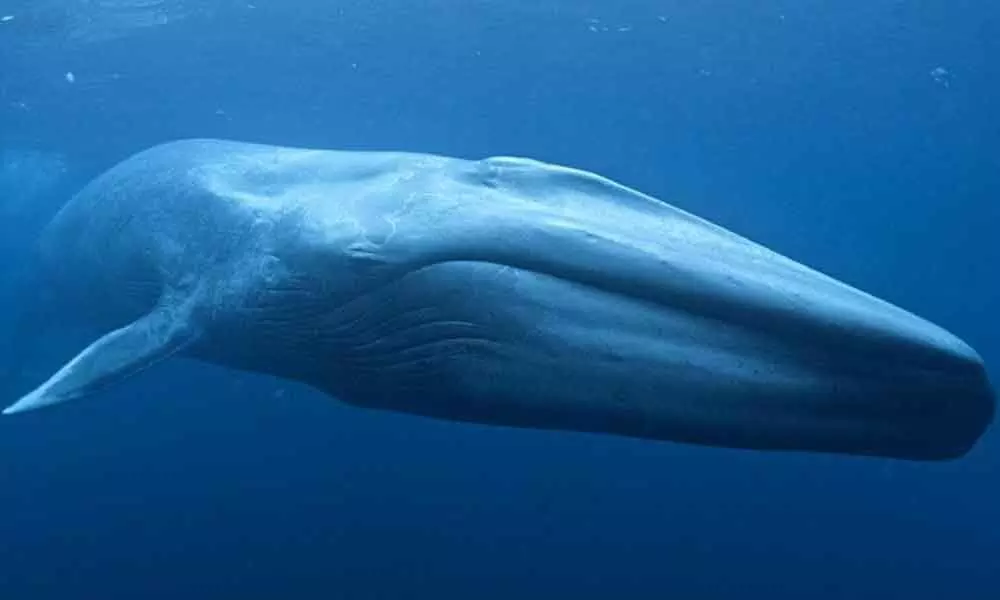Heartbeat of blue whale recorded for first time

Scientists have recorded the heart rate of the blue whale for the first time, and revealed surprising operating extremes of the heart that may limit the size of the largest animal on the Earth.
Scientists have recorded the heart rate of the blue whale for the first time, and revealed surprising operating extremes of the heart that may limit the size of the largest animal on the Earth.
The researchers from the Stanford University in the US used four suction cups that secured a sensor-packed tag near the whale's left flipper, where it recorded the animal's heart rate through electrodes embedded in the centre of two of the suction feet.
"We had no idea that this would work and we were skeptical even when we saw the initial data. There were a lot of high fives and victory laps around the lab," said Jeremy Goldbogen, an assistant professor at Stanford, and lead author of the research paper published in the journal PNAS. Analysis of the data suggests that a blue whale's heart is already working at its limit, which may explain why blue whales have never evolved to be bigger, the researchers said.
The data also suggest that some unusual features of the whale's heart might help it perform at these extremes. Studies like this add to our fundamental knowledge of biology and can also inform conservation efforts, they said. "Animals that are operating at physiological extremes can help us understand biological limits to size," Goldbogen said in a statement. "They may also be particularly susceptible to changes in their environment that could affect their food supply.
Therefore, these studies may have important implications for the conservation and management of endangered species like blue whales," he said. Researchers noted that the tag performed well on smaller, captive whales, but getting it near a wild blue whale's heart is a different task. For one thing, wild whales aren't trained to flip belly-up. For another, blue whales have accordion-like skin on their underside that expands during feeding, and one such gulp could pop the tag right off.
"We had to put these tags out without really knowing whether or not they were going to work," said David Cade, a recent graduate of the Goldbogen Lab. "The only way to do it was to try it. So we did our best," Cade said. He stuck the tag on his first attempt and, over time, it slid into a position near the flipper where it could pick up the heart's signals. The data it captured showed striking extremes, the researchers said. This data was intriguing because the whale's highest heart rate almost outpaced predictions while the lowest heart rate was about 30 to 50 per cent lower than predicted.
The researchers think that the surprisingly low heart rate may be explained by a stretchy aortic arch --part of the heart that moves blood out to the body --which, in the blue whale, slowly contracts to maintain some additional blood flow in between beats. The impressively high rates may depend on subtleties in the heart's movement and shape that prevent the pressure waves of each beat from disrupting blood flow, the researchers said.














